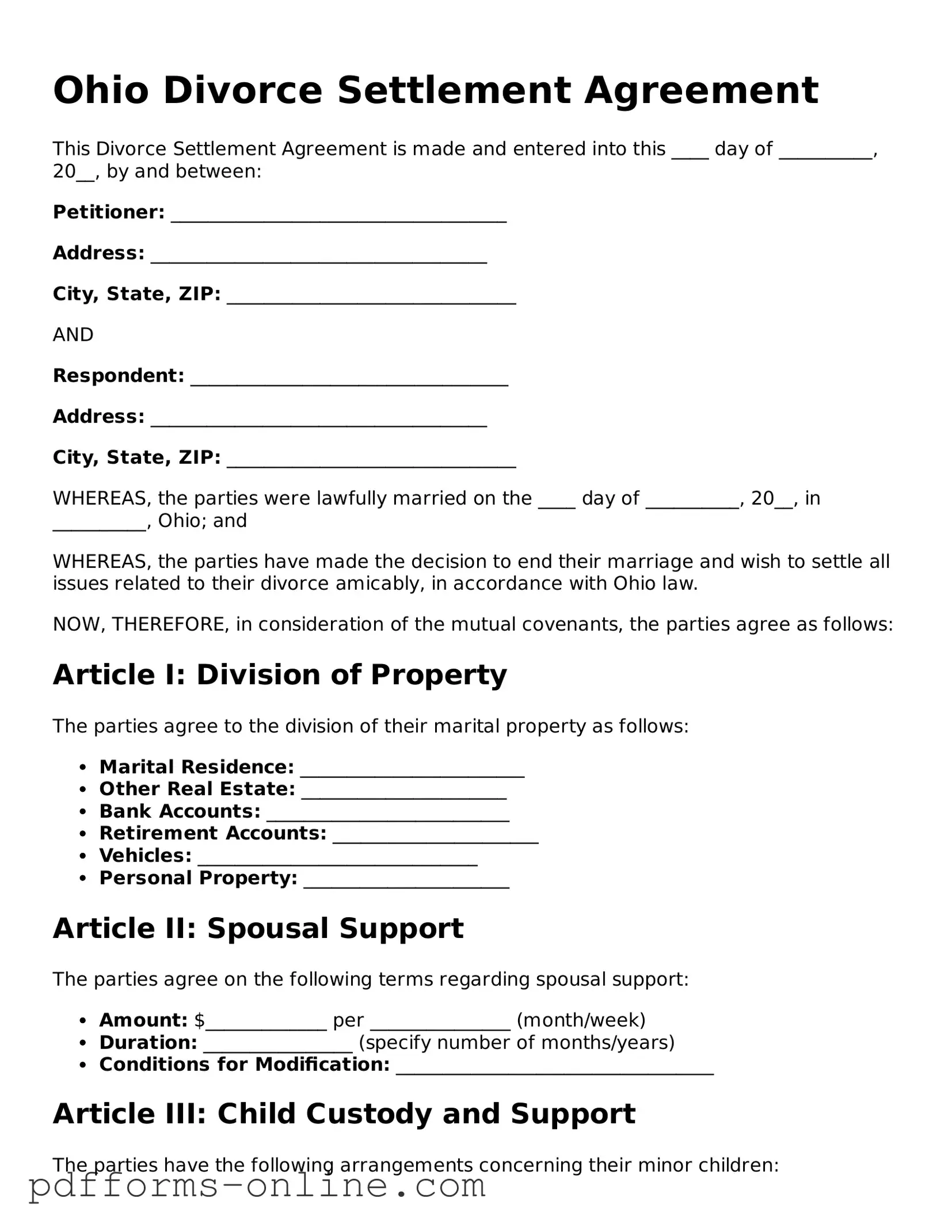Ohio Divorce Settlement Agreement
This Divorce Settlement Agreement is made and entered into this ____ day of __________, 20__, by and between:
Petitioner: ____________________________________
Address: ____________________________________
City, State, ZIP: _______________________________
AND
Respondent: __________________________________
Address: ____________________________________
City, State, ZIP: _______________________________
WHEREAS, the parties were lawfully married on the ____ day of __________, 20__, in __________, Ohio; and
WHEREAS, the parties have made the decision to end their marriage and wish to settle all issues related to their divorce amicably, in accordance with Ohio law.
NOW, THEREFORE, in consideration of the mutual covenants, the parties agree as follows:
Article I: Division of Property
The parties agree to the division of their marital property as follows:
- Marital Residence: ________________________
- Other Real Estate: ______________________
- Bank Accounts: __________________________
- Retirement Accounts: ______________________
- Vehicles: ______________________________
- Personal Property: ______________________
Article II: Spousal Support
The parties agree on the following terms regarding spousal support:
- Amount: $_____________ per _______________ (month/week)
- Duration: ________________ (specify number of months/years)
- Conditions for Modification: __________________________________
Article III: Child Custody and Support
The parties have the following arrangements concerning their minor children:
- Children’s Names: ____________________________
- Custody Arrangement: ____________________________________
- Child Support Amount: $_____________ per _______________ (month/week)
- Expenses Covered: ______________________________________
Article IV: Debt Settlement
The parties agree to the division of their debts as follows:
- Mortgage: ______________________________________________
- Credit Card Debt: _______________________________________
- Loan Obligations: ________________________________________
Article V: Miscellaneous
This Agreement represents the complete understanding of the parties and supersedes any prior agreements. The parties agree that:
- Governing Law: The laws of the State of Ohio shall apply.
- Modification: Any amendments or modifications must be in writing and signed by both parties.
IN WITNESS WHEREOF, the parties have executed this Divorce Settlement Agreement on the date first above written.
Petitioner Signature: ___________________________ Date: _______________
Respondent Signature: __________________________ Date: _______________
